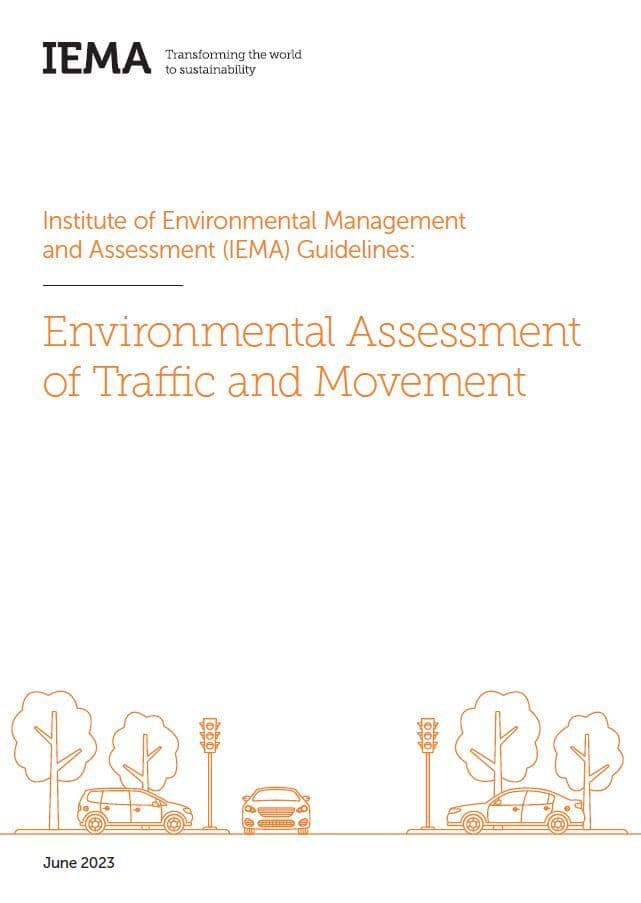
blog: IEMA Guidelines Released on the Environmental Assessment of Traffic and Movement
Monday 7th August 2023

Back in 2016, I was approached by the Institute of Environmental Management and Assessment (IEMA) to establish an impact assessment working group for the purpose of reviewing and updating the IEMA traffic and transport Environmental Impact Assessment (EIA) guidance. I would like to extend my thanks to all authors and contributors for their support in (finally!) getting the update to the 1993 guidance published. This has been the work of volunteers from a number of technical disciplines and professional bodies, providing their expertise in their own time, for the purpose of improving and clarifying best practice approach to the assessment of traffic and movement effects. The value of the cross discipline coverage in the guidelines is recognised by the endorsements kindly provided by the Chartered Institution of Highways and Transportation and the Institute of Air Quality Management.
The Environmental Assessment of Traffic and Movement provides a long-awaited update and replacement of one of IEMA’s first published impact assessment guidance documents from 1993, the ‘Guidelines for the Environmental Assessment of Road Traffic’. The purpose of these updated and replacement Guidelines remains unchanged from the 1993 Guidelines, i.e. to provide practitioners with good practice advice on how to carry out the assessment of traffic and movement of people as part of a statutory EIA or non-statutory environmental assessment.
The phrase ‘seminal work’ is often misused; however, the original 1993 Guidelines were written 30 years ago by an early working group of one of IEMA’s founding bodies, the Institute of Environmental Assessment. It has subsequently been used continuously in projects across the UK and internationally to help provide guidance on this area of impact assessment. The core tenets of the methodology provided in the 1993 Guidelines have been validated by cross-examination of expert witnesses in contested cases over the years and are therefore a testament to the original quality of the working group and their guidance written in the early days of the application of EIA in the UK.
These updated and replacement Guidelines on the Environmental Assessment of Traffic and Movement bring IEMA’s advice up to date based on the lessons learned over the past 30 years of impact assessment practice in the field, and provide the basis for a systematic, consistent and comprehensive coverage for the assessment of traffic and movement impacts for a wide range of development projects.
In addition to traffic and movement expert advice, guidance has been provided by competent experts leading related impact assessments that have interactions with traffic and movement on: air quality, noise, vibration, health, landscape and visual, biodiversity, cultural heritage, climate and GHGs.
The intended audience for these updated and replacement Guidelines is EIA practitioners, determining authorities and other stakeholders concerned with the assessment of traffic and movement impacts within the environmental assessment process. These updated and replacement Guidelines should be used by EIA practitioners working on projects in England, Wales, Scotland and Northern Ireland. Furthermore, the Guidelines will also be useful to many international practitioners, particularly those applying the EIA directive, such as in the Republic of Ireland, as many of the methods and advice provided are highly relevant and applicable to many international EIA regimes.
These Guidelines are free to IEMA members. For more information on these guidelines, please contact Andy Ross.
